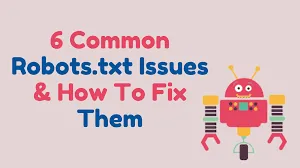Robots.txt: Fix Common Problems for Better SEO
top eight robots.txt errors affecting SEO and learn practical fixes to enhance your site's search presence effectively

8 Common Robots.txt Issues And How To Fix Them
Managing the robots.txt file is crucial for effective technical SEO, ensuring search engines crawl your website correctly without overwhelming your server. Missteps in configuring this file can significantly impact your site's search presence. Below, explore the most frequent issues encountered with robots.txt and how to rectify them, ensuring your website remains both accessible and optimized for search engines.
What Is Robots.txt?
Placed in the root directory, robots.txt is a plain text file that guides search engine crawlers on how to interact with your website. It's essential for controlling crawler access, especially for sites with dynamic URLs or extensive content. However, it’s not a tool for completely excluding pages from search engines like Google.
Common Robots.txt Issues and Solutions
-
Robots.txt Not In The Root Directory: Ensure your robots.txt file is located in the root directory to be recognized by search engines. If it's placed in a subdirectory, search engines will ignore it, rendering it ineffective.
-
Poor Use Of Wildcards: Use wildcards sparingly to prevent broad or unintended blocking of your site content. Test wildcard rules with a robots.txt testing tool before implementation.
-
Noindex In Robots.txt: Since Google ceased obeying noindex directives in robots.txt files in 2019, use alternative methods like a robots meta tag for excluding pages from search results.
-
Blocked Scripts And Stylesheets: Don't block access to CSS and JS files as Googlebot needs them to render your pages correctly. Check your robots.txt file to ensure these aren't inadvertently blocked.
-
No XML Sitemap URL: Including your sitemap URL in robots.txt can aid search engines in more efficiently crawling your site. Although not an error, it’s a missed opportunity for optimizing site discovery.
-
Access To Development Sites: Prevent search engines from indexing development or staging sites by correctly configuring robots.txt. Remember to allow access once the site goes live.
-
Using Absolute URLs: Stick to relative paths in robots.txt to avoid confusion and ensure search engines correctly follow your directives.
-
Deprecated & Unsupported Elements: Remove or replace outdated elements such as crawl-delay or noindex directives, which may no longer be supported by search engines like Google.
Recovering From Robots.txt Mistakes
Correct any errors in your robots.txt and use SEO tools or search engine webmaster platforms to request a re-crawl of your site. While recovery times can vary, taking swift action to rectify issues will minimize any negative impact on your site's search presence.
Final Thoughts
Preventing robots.txt errors is key to maintaining an optimized and accessible website. Handle edits with care, double-check your work, and consider professional review to avoid costly mistakes. If issues arise, address them promptly to ensure your site remains in good standing with search engines.
For more detailed guidance on managing your website's SEO and navigating the complexities of robots.txt, visit Kiksee Magazine for expert insights and tips.
What's Your Reaction?






















